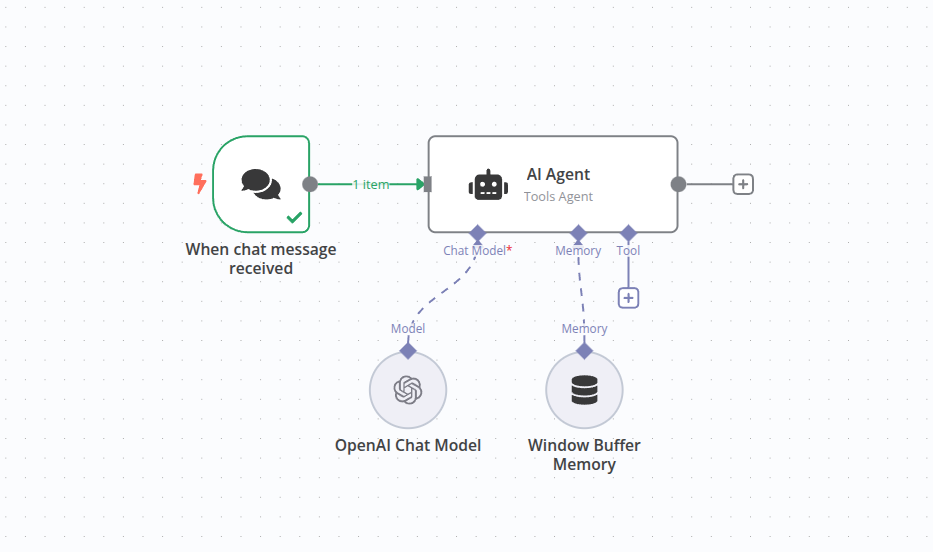AI Integrations
(2025-08-16T23:59.102Z)
Perplexity Query
(2025-08-16T23:59
.102Z)
Question:
When people talk about AI Integrations, I am pretty sure they mean accessing model vendors VIA API and integrating LLM copilots and agents as part of the workflow.
Is that right? Can you either clarify or explain more?
Image References: Please include the following image references throughout your response where appropriate:
Model: sonar-pro
Response from sonar-pro:
“AI integration” typically refers to connecting AI models or services (often via API) and embedding their capabilities (such as large language models—LLMs—or copilots/agents) directly into digital workflows, products, or business processes.
[5q6kzm]
[8q07rn]
[7ktxu0]
This lets organizations automate trivial decision-making, enhance task execution, and create smarter, more responsive systems.
 Clarification and Expansion:
Clarification and Expansion:- Model Vendors via API: Most practical AI integrations do involve calling external AI models (for example, from OpenAI, Google AI Studio, Anthropic) using their public APIs. This lets your software send data (like a prompt or image) to the vendor, receive a prediction or response, and use it within your process. [8q07rn] [5q6kzm] [7ktxu0]
- Example: Embedding a GPT-based chatbot into your website’s support workflow means you’re integrating by connecting your backend (via API) with the model provider.
- LLM Copilots and Agents: These are more advanced forms of integration. A copilot helps users perform tasks within applications (writing, analysis, coding) by leveraging AI in real time. An agent can chain together multiple steps, learn user preferences, and even trigger further actions across systems. [5q6kzm] [7ktxu0]
- An HR platform with an embedded LLM copilot that analyzes resumes, schedules interviews, and answers candidate questions—all orchestrated by integrating the LLM with calendaring, HR databases, and messaging tools.
- Workflow Automations: Integration goes beyond just calling an AI model—it's about orchestrating multiple software tools, data sources, and AI systems together to automate whole workflows. AI integration often includes:
- Data connectors (for real-time or batch data feeds to models)
- Triggering AI tasks when certain workflow steps are reached (e.g., document classification after upload)
Below is an illustrative breakdown with image reference suggestions for clarity:
| Stage | Description | Image Reference |
| System Workflow Design | Mapping the high-level process: where AI, data, and people fit together | [IMAGE 1] (AI workflow diagram—shows how components connect) [mrv5cp] |
| API Integration | Technical connection between software and external model provider (e.g., OpenAI API call) | [IMAGE 2] (shows app connecting to cloud AI service as part of a workflow) [8q07rn] [5q6kzm] |
| Orchestrated AI Workflows | Multiple tasks—like data collection, classification, notification—automated using AI agents. AI Orchestration | [IMAGE 3] (visualizes multi-step workflow, e.g., document passes through LLM for classification) [7ktxu0] |

Essential Context:
- AI Orchestration goes further—automating how and when to use which AI and data services, managing multi-step operations with minimal human intervention. [5q6kzm] [7ktxu0]
- Process Mapping is critical up front: diagramming workflows helps identify where AI can provide the most value, and ensures any integration is both effective and compliant. [4ac8wt] [mrv5cp]
Summary Table (Conceptual):
| Concept | Involves... | Typical Example |
| API Integration | Connecting to an AI model through an API call | Sending text to an LLM and receiving a summary |
| Copilot Integration | LLM embedded within a UI/application for productivity | AI that drafts email replies within your email client |
| Agent/Orchestrator, AI Orchestrators | Automated multi-step workflows, with AI at key steps | Automated document processing and triage pipeline |
Visual References:
- [IMAGE 1]: A stylized AI workflow diagram—showing sequential steps from data to deployment, connected by arrows and icons for each stage (database, filter, brain, rocket). [mrv5cp]
- [IMAGE 3]: A practical visualization of end-to-end AI automation, e.g., a document uploaded, routed through classification, with actions triggered based on outcome. [7ktxu0]
Conclusion:In summary, AI integration means more than just “plugging in" an LLM; it’s about designing, mapping, and orchestrating how AI capabilities—accessed via APIs—can be embedded into products, workflows, or business operations for real, automated impact.
[5q6kzm]
[8q07rn]
[7ktxu0]
Citations
[mrv5cp] 2025, Aug 11. AI Workflow - Machine Learning Systems. Published: 2016-01-01 | Updated: 2025-08-11
[8q07rn] 2025, Jun 16. How Your Business Can Benefit From AI Workflow Automation. Published: 2024-04-01 | Updated: 2025-06-16
[5q6kzm] 2025, Jun 16. AI orchestration: A beginner's guide for 2025 - Sendbird. Published: 2025-02-04 | Updated: 2025-06-16
[4ac8wt] 2025, Jul 31. Workflow Process Mapping: AI Integration Guide - Insight7. Published: 2024-08-09 | Updated: 2025-07-31
[7ktxu0] 2025, Jul 17. AI Orchestration Explained | Ways to Integrate AI in Your Business. Published: 2024-07-15 | Updated: 2025-07-17